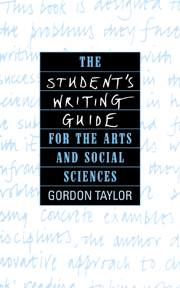3 - Interpretation: reading and taking notes
Published online by Cambridge University Press: 29 January 2010
Summary
But be ye doers of the word, and not hearers only, deceiving your own selves.
st james's epistleThe ‘problem’ of reading
Common difficulties
Your essay, we found in chapter 2, is your ‘best’ answer to a question. It is not an answer to be found in some book. Nor is it an answer to be found in some combination of books. It is not, on the other hand, an answer to be spun wholly out of yourself as a spider spins its web. The problem of reading for an academic essay is the problem of establishing the relationship between ourselves and our books on a reliable and firm footing. Many students pose the problem in words such as these: ‘I know so little about the subject and those who write the books know so much. In addition, these authors express their ideas much better than I can. How, then, can I be expected to give my own answer in my own words when it is all in the books? Much of the time I have to struggle to merely understand what they say, far less give my own ideas.’ Put this way the problem is misconceived because such a student sees his or her role as being on the one hand to comprehend and reproduce what the books say while on the other to be ‘original’.
- Type
- Chapter
- Information
- Publisher: Cambridge University PressPrint publication year: 1989



